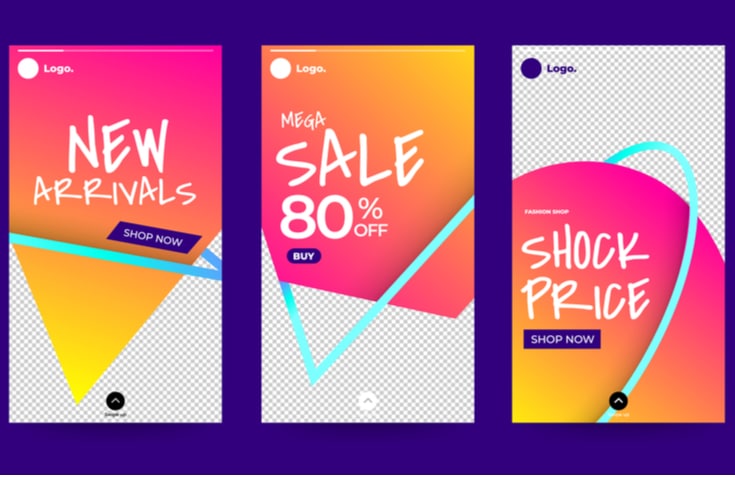What are the Regulations of the Japanese 'Pharmaceuticals and Medical Devices Act' Regarding Advertising in Instagram Posts and Stories for Pharmaceuticals and Cosmetics?

For instance, when advertising pharmaceutical products, it is necessary to include warnings and handling instructions in the advertisement. The small print warnings seen on pharmaceutical posters are in compliance with the ‘Japanese Standards for Fair Advertising of Pharmaceuticals and the like’.
So, how should we consider this when advertising through Instagram posts or stories? In reality, Instagram, whether it’s posts or stories, has a limit to the amount of text that can be displayed, making it difficult to include warnings in small print like on posters.
This issue is indispensable for legal advertising operations for various products such as pharmaceuticals, quasi-drugs, cosmetics, etc., which are often advertised by influencers through Instagram posts and stories. In this article, we will explain what kind of display should be made in Instagram posts and stories.
Why Detailed Warnings Should Be Included on Posters and Similar Materials
Firstly, it should be noted that the fine print warnings on posters and similar materials are in accordance with the following standards related to the Japanese Pharmaceuticals and Medical Devices Act (formerly the Pharmaceutical Affairs Law).
When advertising pharmaceuticals and other products that require special attention for use and handling, these matters, or the need to pay attention to use and handling, must be noted or stated.
PDF:Explanation and Points to Note on the Standards for Proper Advertising of Pharmaceuticals and Other Products[ja]
(Excerpt)
For pharmaceuticals and other products that require special attention for use and handling (for example, products that are contraindicated for individuals with specific constitutions), it is naturally necessary to state this in the attached documents, etc. In such cases, in advertising as well, these matters or the need to pay attention to use and handling should be noted or stated.
The scope and method of expression of this “attention to use and handling” are specifically defined for the following:
- Pharmaceuticals
- Quasi-drugs
- Cosmetics
These are each stipulated in their respective documents.
For more information on how “pharmaceuticals” and “quasi-drugs” are distinguished, please refer to the detailed explanation in the following article.
https://monolith.law/corporate/pharmaceutical-affairs-law[ja]
Also, on our site, we provide a detailed explanation of the items that must be displayed in advertisements for quasi-drugs in the following article.
https://monolith.law/corporate/quasi-drug-display-obligation[ja]

Instagram Posts and Stories as “Advertisements”
According to the Japanese Pharmaceutical Affairs Law, an “advertisement” is defined as:
Clearly intended to attract customers (to stimulate their desire to purchase)
PDF: Applicability of Advertisements for Pharmaceuticals, etc. under the Pharmaceutical Affairs Law[ja]
The product name of a specific medicine or similar is clearly stated
It is in a state that can be recognized by the general public
These three conditions must be met. In essence, posts and stories that have a promotional effect are considered advertisements and are subject to the regulations of the Japanese Pharmaceutical Affairs Law. As they are “advertisements”, these posts and stories must adhere to the above criteria. In principle, they are required to include a note stating that “attention should be paid to usage and handling precautions”.
No Warning Required for “Signs and Other Structures”
However, the Japanese Pharmaceutical and Medical Device Act Advertising Standards (薬機法広告基準) stipulate the following for advertising media where it is practically difficult to include a warning.
However, this does not apply when only the product name is advertised on signs and other structures.
PDF: Explanation and Points to Note on the Standards for Proper Advertising of Pharmaceuticals, etc.[ja]
In other words, in the case of signs, depending on the size, it is practically difficult to include the “Warnings for Use and Handling” that could be included in a poster. Therefore, it is understood that it is unavoidable if no such warning is included in this case.
Do Instagram Posts and Stories Qualify as “Signs and Other Structures”?
So, what about posts and stories on Instagram, or posts on other social media platforms, which are not “signs”?
As far as our firm is aware at the time of writing this article, the Tokyo Metropolitan Health and Welfare Bureau operates under the following interpretation.
Firstly, advertisements that only list the product name on media with limited information, such as social media, can be considered as “signs and other structures”. Therefore, it is not always necessary to include “warnings and instructions for use”.
Also, the term “product name only” does not strictly mean that only the display of the product name is allowed. Although this is a matter of individual judgment, even if expressions such as images of the package, photos of the influencer making the post, and background music are made at the same time as the product name is listed, there may be cases that qualify as “signs and other structures”.
The reason why expressions other than the product name are allowed is believed to be based on the purpose of requiring the notation of “warnings and instructions for use”. In other words, it is a value judgment that when advertising the effectiveness of a product, consumers should also be informed of its dangers and proper usage. Therefore, if there are no expressions related to the effectiveness of the product in the advertisement, even if there are expressions related to the effectiveness other than the product name, it is not necessary to include “warnings and instructions for use”.
However, this interpretation is only what our firm is aware of at the time of writing this article, and we cannot guarantee the accuracy of the above statement. We would appreciate your understanding in this regard.

Summary
Based on the above considerations, advertisements in posts and stories on Instagram, if they do not contain any claims about the effectiveness of the product, can be classified as “signs or other structures”, and there is no particular need to include “warnings and precautions for use” in small print in the post.
However, the above is based on “individual judgment”, and even in advertisements on social media platforms like Instagram, there may be cases where “not including such items” could result in a violation of the law. The judgment in this area is quite specialized, so it would be safer to consult a law firm with experience and expertise in media operation support related to laws such as the Japanese Pharmaceuticals and Medical Devices Act.
In addition, pharmaceuticals, quasi-drugs, and cosmetics are subject to various legal regulations beyond what is described in this article. These are explained in the articles below.
https://monolith.law/corporate/quasi-drug-advertisement-guidelines[ja]
https://monolith.law/corporate/cosmetics-healthy-food-advertisement[ja]
Introduction to Our Firm’s Measures
In the operation of media and marketing involving laws such as the Japanese Intellectual Property Law, the Japanese Unfair Competition Prevention Law, and the Japanese Pharmaceuticals and Medical Devices Law, it is necessary to have attorneys with expertise in creating guidelines and conducting sampling checks. Details are provided in the article below.
Category: General Corporate





















